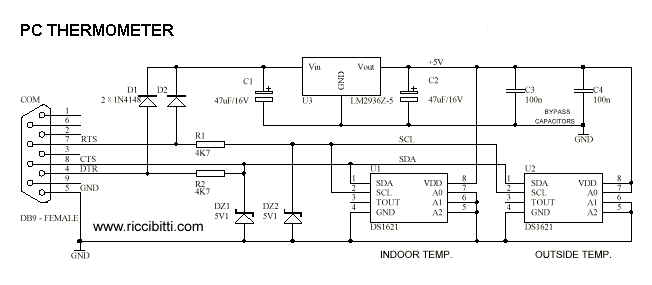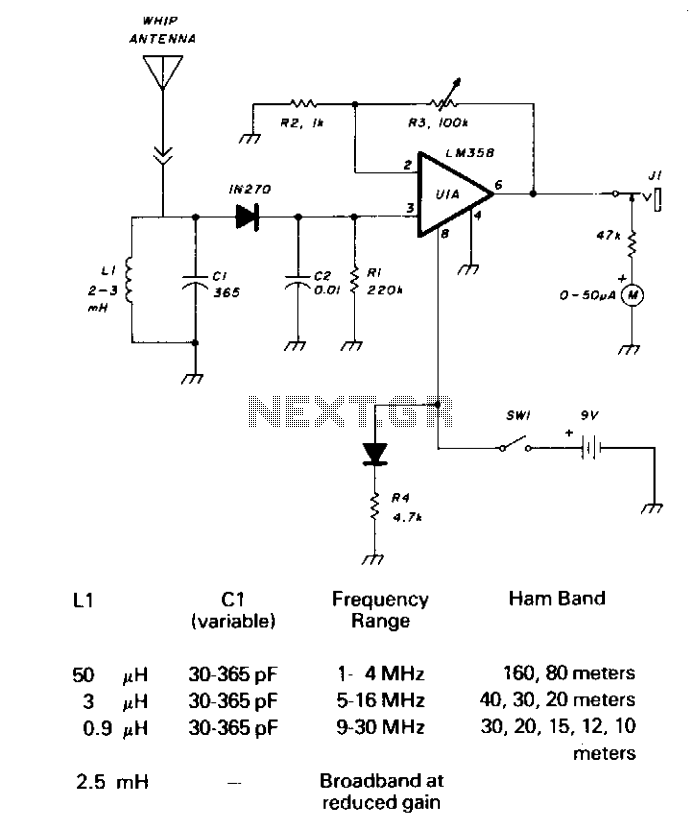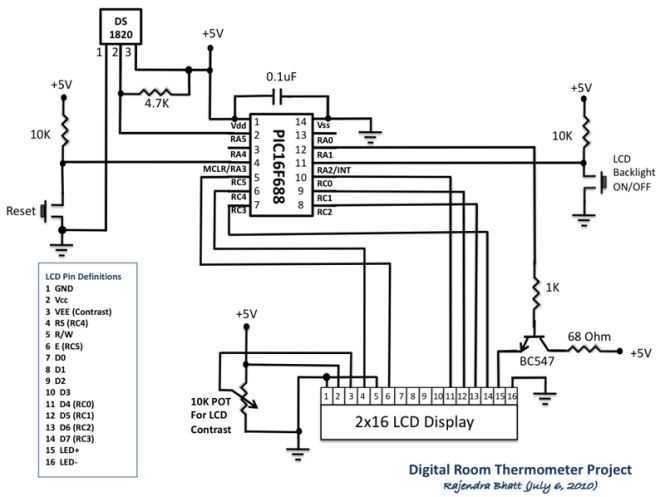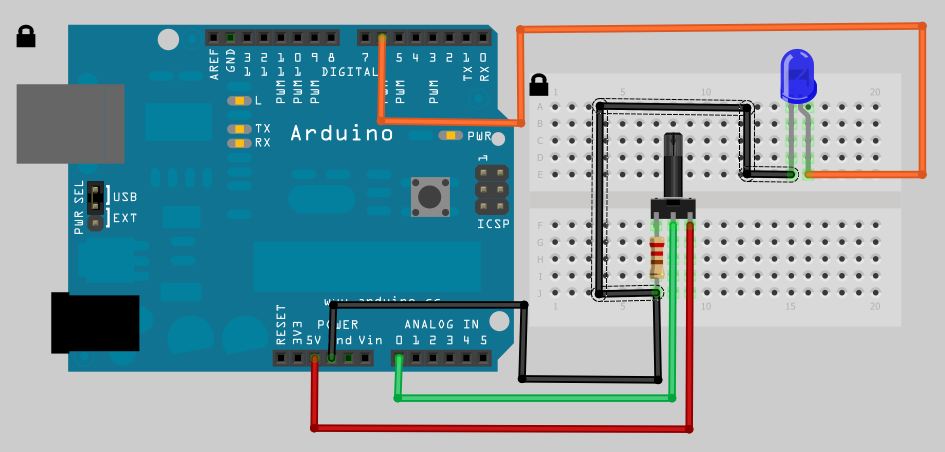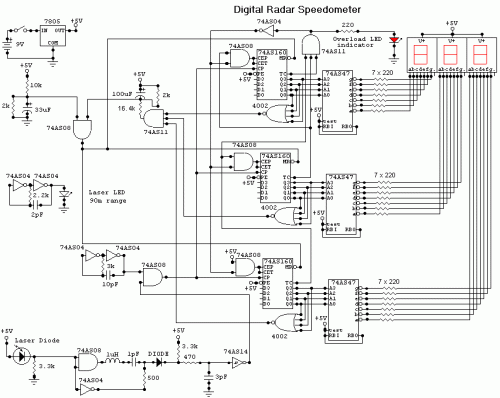
VU meter with LM3915
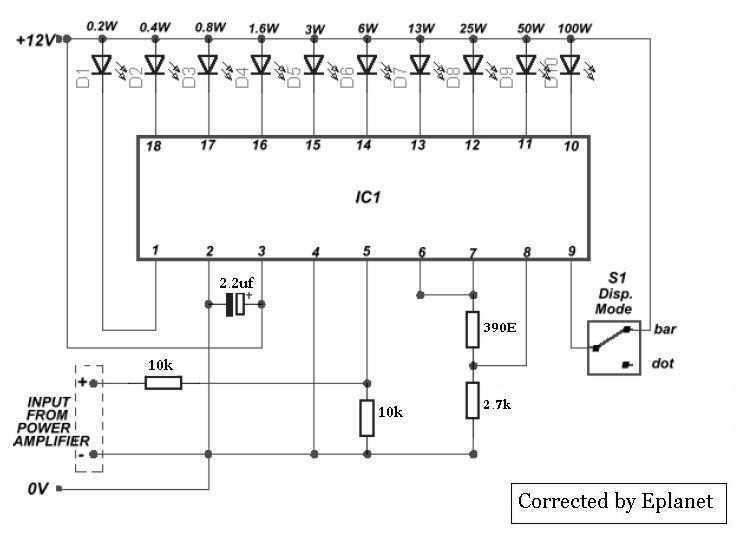
This nifty sound level meter is a perfect one chip replacement for the standard analog meters. It is completely solid state and will never wear out. The whole circuit is based on the LM3915 audio level IC and uses only a few external components. More: Parts: C1=2.2uF 25V Electrolytic Capacitor R1=1K 1/4W Resistor D1=1N4002 Silicon Diode LED1-LED10=Standard LED or LED Array U1=LM3915 Audio Level IC MISC=Board, Wire, Socket For U1 Notes 1. V+ can be anywhere from 3V to 20V. 2. The input is designed for standard audio line voltage (1V P-P) and has a maximum input voltage of 1.3V. 3. Pin 9 can be disconnected from ground to make the circuit use a moving dot display instead of a bar graph display.
The sound level meter circuit utilizes the LM3915 integrated circuit, which is specifically designed for audio level metering. This IC can drive up to ten LEDs in either a bar graph or dot mode, providing a visual representation of audio signal levels. The circuit is powered by a voltage source (V+) that can range from 3V to 20V, allowing for flexibility in various applications.
The primary components include a 2.2µF electrolytic capacitor (C1) that helps with signal coupling, and a 1K ohm resistor (R1) that limits current through the LEDs. A 1N4002 silicon diode (D1) is included for reverse polarity protection, ensuring the circuit remains functional even if the power supply is connected incorrectly. The ten LEDs (LED1-LED10) can be standard discrete LEDs or a pre-formed LED array, depending on design preferences.
The input stage of the circuit is designed to accept standard audio line levels, with a nominal input of 1V peak-to-peak and a maximum allowable input of 1.3V. This makes it suitable for a variety of audio applications, such as audio mixing consoles, sound level monitoring, and other audio equipment.
Additionally, the LM3915 allows for customization of the display mode. By disconnecting pin 9 from ground, the circuit can be configured to operate in dot mode, providing a moving dot display that may be preferable in certain scenarios, such as when monitoring transient audio signals. This feature enhances the meter's versatility, allowing it to be tailored to specific user needs.
Overall, this sound level meter circuit is a robust, solid-state solution for audio level monitoring, combining simplicity with effective performance.This nifty sound level meter is a perfect one chip replacement for the standard analog meters. It is completely solid state and will never wear out. The whole circuit is based on the LM3915 audio level IC and uses only a few external components. Parts: C1=2.2uF 25V Electrolytic Capacitor R1=1K 1/4W Resistor D1=1N4002 Silicon Diode LED1-LED10=Standard LED or LED Array U1=LM3915 Audio Level IC MISC=Board, Wire, Socket For U1 Notes 1. V+ can be anywhere from 3V to 20V. 2. The input is designed for standard audio line voltage (1V P-P) and has a maximum input voltage of 1.3V.
3. Pin 9 can be disconnected from ground to make the circuit use a moving dot display instead of a bar graph display. 🔗 External reference
The sound level meter circuit utilizes the LM3915 integrated circuit, which is specifically designed for audio level metering. This IC can drive up to ten LEDs in either a bar graph or dot mode, providing a visual representation of audio signal levels. The circuit is powered by a voltage source (V+) that can range from 3V to 20V, allowing for flexibility in various applications.
The primary components include a 2.2µF electrolytic capacitor (C1) that helps with signal coupling, and a 1K ohm resistor (R1) that limits current through the LEDs. A 1N4002 silicon diode (D1) is included for reverse polarity protection, ensuring the circuit remains functional even if the power supply is connected incorrectly. The ten LEDs (LED1-LED10) can be standard discrete LEDs or a pre-formed LED array, depending on design preferences.
The input stage of the circuit is designed to accept standard audio line levels, with a nominal input of 1V peak-to-peak and a maximum allowable input of 1.3V. This makes it suitable for a variety of audio applications, such as audio mixing consoles, sound level monitoring, and other audio equipment.
Additionally, the LM3915 allows for customization of the display mode. By disconnecting pin 9 from ground, the circuit can be configured to operate in dot mode, providing a moving dot display that may be preferable in certain scenarios, such as when monitoring transient audio signals. This feature enhances the meter's versatility, allowing it to be tailored to specific user needs.
Overall, this sound level meter circuit is a robust, solid-state solution for audio level monitoring, combining simplicity with effective performance.This nifty sound level meter is a perfect one chip replacement for the standard analog meters. It is completely solid state and will never wear out. The whole circuit is based on the LM3915 audio level IC and uses only a few external components. Parts: C1=2.2uF 25V Electrolytic Capacitor R1=1K 1/4W Resistor D1=1N4002 Silicon Diode LED1-LED10=Standard LED or LED Array U1=LM3915 Audio Level IC MISC=Board, Wire, Socket For U1 Notes 1. V+ can be anywhere from 3V to 20V. 2. The input is designed for standard audio line voltage (1V P-P) and has a maximum input voltage of 1.3V.
3. Pin 9 can be disconnected from ground to make the circuit use a moving dot display instead of a bar graph display. 🔗 External reference
